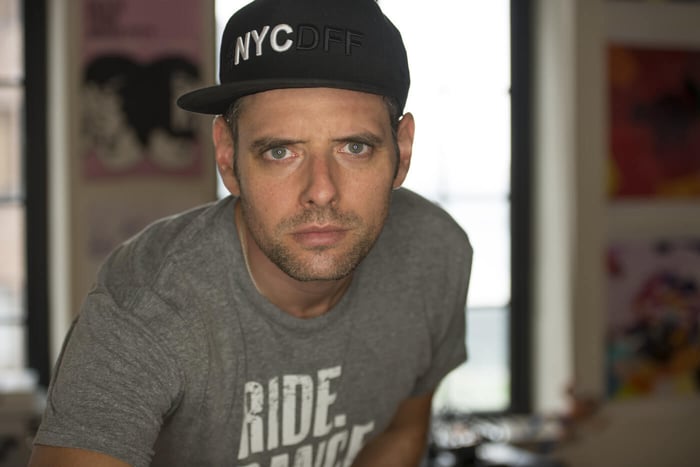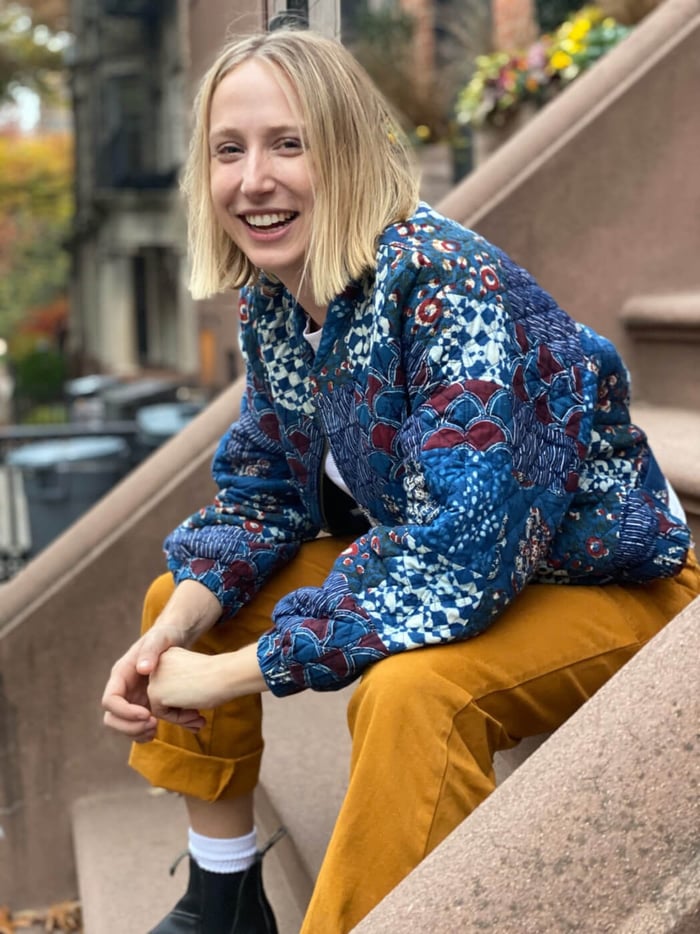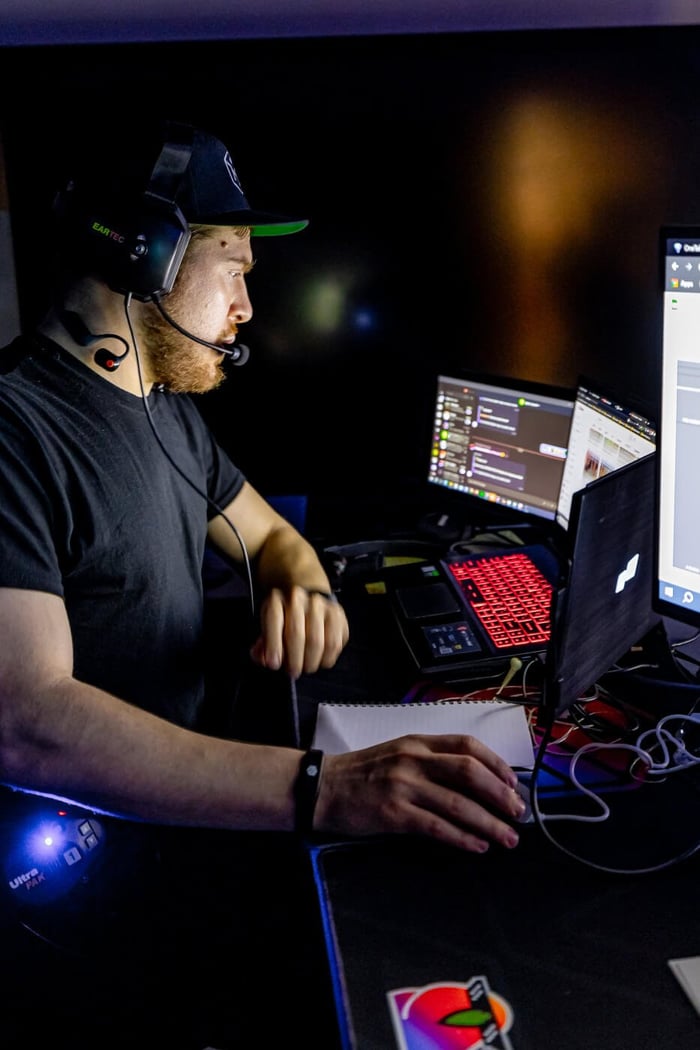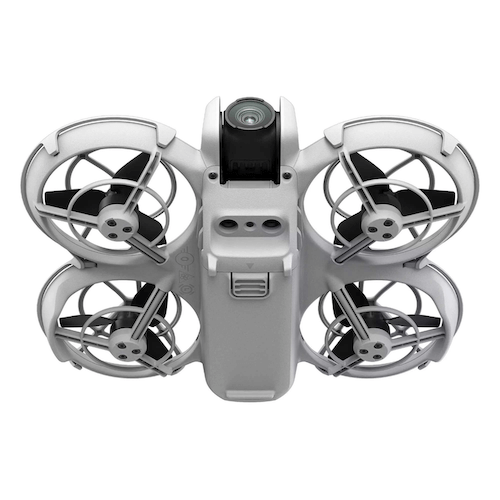Aside from being the founder of the New York City Drone Film Festival, Randy Scott Slavin is an accomplished multi-hyphenate who has gained accolades for his work across various creative pursuits. He has found success as a photographer, drone expert, and director of award-winning music videos, short films and commercials. His work has garnered millions of impressions, and has been featured across countless major media platforms - from magazines to TV and film. Here at Glyph - we are always looking to nurture our community of creative professionals. We’re incredibly excited to launch this series of profiles on some of our favorite creatives doing it today, and are grateful to have sat down with Randy for this conversation.
If you were meeting someone at a bar and they asked you what you do, how would you actually describe yourself to them?
Randy: I would say that I’m a director and a drone specialist who started the New York City Drone Film Festival - at least that’s what I am on paper. I see myself as more of a full-service creative though. I hold the job of director almost as a religion in terms of storytelling and the place that holds in society. For me, it’s a role for someone who sees the big picture, somebody who understands tone, who understands all the different departments.This is why I hold it in such high regard, because I don't see it as a few pieces of the job that needs to be done.

Talk to us about the beginnings of your career and how you got started. You know, those really early days.
Randy: My career started 20 or so years ago, and I just was shooting every single thing I could get my hands on. I remember my mom was going to some aerobics class and I remember going tothat and being like, ‘yo, can I shoot a promo video for you?’ It’s been kind of like that since, and I don’t think my angle has changed much. I’ve tried to go fast and furious in the direction of making as much as I can.
My technique has gotten much better and I've had a lot more wins since then, but basically that's kind of been the long and short of it. I think the biggest change in my career since then has been the adoption of drones, which happened in 2013. I saw this skateboard video that had a shot in it that I couldn't place. I couldn't understand how they shot it. So I did some research and basically found out how it was done, and that's when I started building drones. And that has kind of, I wouldn't say necessarily taken me off course, but it took me on a different path that's tangential to directing and to creating in this way.
Drones have truly made a very impactful mark on all industries. They are part of almost every single show, every single commercial music video, high end, low end, everything. And thanks to the proliferation of drones and the prevalence of accessibility to them, you can get some beautiful shots.That being said, you can't always get somebody that knows how to really use them in the right way. It requires a lot of really amazing and disparate skill sets to be able to really shoot drone shots well, let alone do it when you're under pressure on set in front of professionals and being able to have the nerve to fly during those really high pressure situations.
Who were your earliest influences and who are some of the creatives that still inspire you today?
Randy: Stanley Kubrick has always been a huge favorite of mine. He showed me what it means to be a serious storyteller. Then there’s John Huges with movies like Ferris Bueller’s Day Off. I don't look at John Hughes movies and say that's how I want to direct. I look at John Hughes movies and I think that's how my life should be, which is bizarre and not necessarily that healthy, but it just is what it is. I grew up with movies like Ferris Bueller's Day Off, The Lost Boys, National Lampoon's Family Vacation, Tim Burton’s Batman and Beetlejuice - movies like that throughout the eighties and nineties. My version of love was presented by these movies and how a director chose to portray that on screen. Part of the reason I wanted to be a director is because these works were so impactful. You're instructing generations of the future about how to deal with what real life actually is.
Some of these influences have really carried over to today as well. For instance, David Fincher is incredible. Every single one of his movies is just so good. Other influences of today include Damien Chazelle who is a young director whose work is absolutely mind blowing. Quentin Tarentino and Paul Thomas Anderson for sure as well. Denis Villeneuve with works like Dune and Blade Runner 2049 is really high on the list too. I like to watch as much media as possible. Ultimately as a creative, it's your job to constantly be eating up media as much as possible and gathering as many influences as possible.

What's an example of an early project that really helped you find your style or push your creative comfort zone?
Randy: I've never been the kind of person that says “I have a style and I'm gonna push it onto every project”, because I just don't feel that way. And part of that, I think, relates directly back to Stanley Kubrick. One of the things that I always appreciated about Stanley Kubrick, and that I loved and kind of held close to me, is how Kubrick treated every single different topic, every movie that he made, in a world of its own.
I've tried to approach every project with the questions of ‘what is the story I'm telling?’ and ‘what's the best way to tell it?’ ‘What’s the emotional undercurrent and the most important part of this story?’ And then [figuring out] the calculus behind telling that story, because filmmaking is very much like a mathematical equation. I don't ever like to infuse a style or insert myself over the story for better or for worse. With that being said, one thing that I really do always hold dear, especially on projects that are more kind of like fun and/or punk, is that I like exploring techniques that are new and interesting to me - like experimenting with 360 action cameras and drones early on is a perfect example of that.

Since we're talking about fun, I do want to talk about your music video work for a moment. Much of your early music video work - from the Foo Fighters video contest to Gambit’s ‘This Town’ music video - there is so much fun weaved in. Can you talk about how music has influenced your work and the love for the music video as an art form?
Randy: I got into filmmaking because I wanted to actually be in music, honestly. Growing up, a group of my closest friends were in a band called Stage that was signed to Maverick Records. We all grew up as kids together, and you know, I picked up a camera partially because I was interested in the camera, but also partially because I just wanted to be around them. There was something inside me that wasn't very clear at first that was like - ‘you know, I like this. I think this is sexy, I like this energy and I want to be a part of this scene.’ That led me towards the music side, and I began making video videos based on that. Film and music are best friends… so understanding that is one of the key skill sets to understanding how sound plays into tone.
Once I started making music videos, I just started going down that rabbit hole. I was like, okay, I can see this as an avenue for making a career as a director, um, however misguided that necessarily was. But, you know, one of the fun things about that was that I could approach all of the different musicians that I had in my life, and work with them closely and creatively, and push boundaries. When I won the South by Southwest Special Jury Award in ‘08 I really saw that merging of passions come to life. I even met my wife through directing her music video!
That’s amazing. You touched on this earlier in one of your answers, but there are a number of projects that share a common theme of new techniques and/or technologies being integrated really early in their life cycle. There’s the Alternate Perspectives photo series, the commercial you did for Adweek, the Aerial NYC video , the Lion of Ido's ‘Hard to Love’ music video, and then there's the Hesta Prynn ‘Can We Go Wrong?’ music video. Can you speak about your relationship with emerging technology, and maybe something that excites you about where technology's going right now?
Randy: Yeah, totally. I've just always liked toys. I remember when I was a kid going to elementary school and I always bought some stupid new toy. I think that sense of play is a benefit of being a creative. There’s this joy of what it means to be interested in things, you know? - and I mean that in the geekiest, most unselfconscious way. I think it’s important to take that as an adult and ask yourself, ‘how do I use that for the benefit of my artwork?’
All of those projects that you mentioned were vestiges of that - the Lion of Ido video and also the video with my now-wife Hesta Prynn. Those are videos where I was exploring live action stop motion. I was interested in this technique and had seen it used.The ad week video was me playing around with 360 video. It wasn't like it is today where you can pick up an Insta 360 camera and in a split second create a video with this technique. I had to find one company that was making a 3D printed array. There weren’t even 3D printers at that point. I also had to find this company that was making rigs that could fit two GoPros - and then there’s the software, it was an absolute nightmare, you know? As was doing all the stop frame animation! The Lion of Ido video was better because I approached that in a very punk rock way. It was basically me and the band hanging out all night long until the sun rose and just shooting a bunch of things. For the Hesta Prynn video, we shot 13,000 still photos for that. Forget about it with the 360 video that I did for Ad Week, the post on that was a nightmare.
Do you find that the end product is more gratifying when you go through these sometimes tedious and frustrating endeavors with new tech?
Randy: I think it’s a combination of the real true love of the technique - and then there's a lot of fun in the idea of being a pioneer in a technique that people haven't seen before - and usually instilling enough wonder in the audience outweighs those tough moments. Even if I’ve instilled at least a portion of the wonder that I had when I first saw those elements in the audience, then I’ve done something right.
Of course there will always be those moments though where I’ll say to myself “I just wish this one would just get more views or infiltration into the market”. I never let that really stop me. I still try to make things with that same underlying intention of ‘What's interesting to me? What do I like about it? How can I then take this technique and do what I want with it?’ Whatever headaches I encounter along the way are almost like growing pains that you kind of have to endure in order to be able to do something that's different.
Can you talk a bit about the New York City Drone Film Festival?
Randy: Sure. I started the film festival because I was super into drones and one of my drone films, Aerial NYC went viral in the early days because nobody had seen drones. You couldn’t even buy drones off of the shelf really. It was very, very early on. The Phantom had just come out when I started getting into it. FPV drones were in their infancy. You couldn't buy a DJI Avata or any of those other things. There were very small bits of information here and there on message boards. But I still persisted in the same way as I did before, and I built a bunch of things and bought as much as I possibly could.
When the video went viral, I decided to submit the footage to a film festival only to realize there were no film festivals servicing the drone market specifically. This wasn't a film - more so just interesting views of New York City that people hadn't seen before, so I started the New York City Drone Film Festival because I saw this gap in the festival circuit.
We had great sponsors over the years, and thousands of viewers coming every year to the festival, as well as lots of submissions. I stepped into the role of being the film festival owner and away from being a filmmaker. That’s why I decided to sell the film festival in 2020 and focus more on being a filmmaker again. One of the real benefits of being a festival director is that - throwing a live event and meeting the community is a form of storytelling, really. When you see what people are doing you understand how to push yourself also.

How have you seen the community grown over the years?
Randy: Every year, more and more people came to the screenings and submitted their work. The community on Instagram has grown to 110,000 followers, which was pretty good for a niche market for drone filmmakers.
Can you touch on some of your more recent career highlights?
Randy: Over the past 10 years I've been developing my company Yeah Drones which is a drone production service provider for film and TV. Some recent projects I’ve worked on include Saturday Night Live where I operated the first drone to ever be flown in Studio 8 and I got to shoot Dave Chappelle which was pretty amazing.
I just recently shot a show for FX, which is called ‘Fleischman is in Trouble’ with Jesse Eisenberg and Claire Danes. Amazing, amazing series. They used the drone stuff in a really, really beautiful way, which I was really excited about. I did another project for Peacock called ‘Sex Lies and the College Cult’ and then a shoot for Wu Tang Clan recently. Other work includes a documentary called ‘Of Mics and Men’. I recently did a shoot for ‘Supreme Team’ on Showtime as well as a piece on graffiti artist Royal Dog for Porsche x Billboard. I've shot for Tiffany, Ray Donovan, Dicks Dickinson, Twilight Zone, Lenox Hill, FBI… it’s been awesome.
A couple of years ago I shot with J Balvin and Bad Bunny. I have been shooting a lot of commercial and documentary projects which is super fun, most notably two Super Bowls and Nickelodeon Slime Time live with the Colts which an absolute blast. Amy, The Amy Winehouse documentary, licensed footage from me from that aerial NYC video I spoke about earlier. The filmmakers reached out to me and said, “Hey, we're making this documentary about Amy Winehouse, we want to license one of your aerial NYC images”. They used it in the film at one of the most consequential moments and they played ‘Rehab’ with an echo on it, as if it was playing everywhere in the world echoing through the streets of Manhattan. It’s a hustle to be in this creative world. But, I don't know anything else. So, you know, it's been kind of fun to do all that.
What are some of your challenges as a filmmaker?
Randy: Media is the bane of my existence. I edit really fast, so working on drives that are speedy enough has always been a real challenge. No matter how expensive the computer is, I feel it’s always a challenge for it to keep up. I don’t want to lose a thought. Everything requires so much time and I don't even mind rendering, but it’s the worst feeling when you press the spacebar and it takes four seconds to start playing.
I go out and shoot drone stuff and it's like 500 gigs, so storage is becoming more and more important for me in two main ways. One is my archival needs and being able to go back and access a project safely after a couple of years - or even add it to another iteration of that project. This is especially relevant when it comes to commercial projects. Then, there’s just the pure editing side which is having drives that are fast enough to edit off of. Hard drive space in 2023 is always a concern for me. I'm always looking for reliable media that I can know in my heart of hearts is going to be secure. When the Glyph Atom Pro came out, I was stoked about these ultra fast 2,800 megabyte per second read and write speeds and the fact that the drive is machined aluminum and completely indestructible. As an editor on set, I don't want any lagging coming from my hard drives. After I'm done with a full day, the last thing I want to do is wait while things are copying.

Thank you so much for your time and insights. Any last words for the readers?
Randy: Go watch every Kubrick film ever made.





